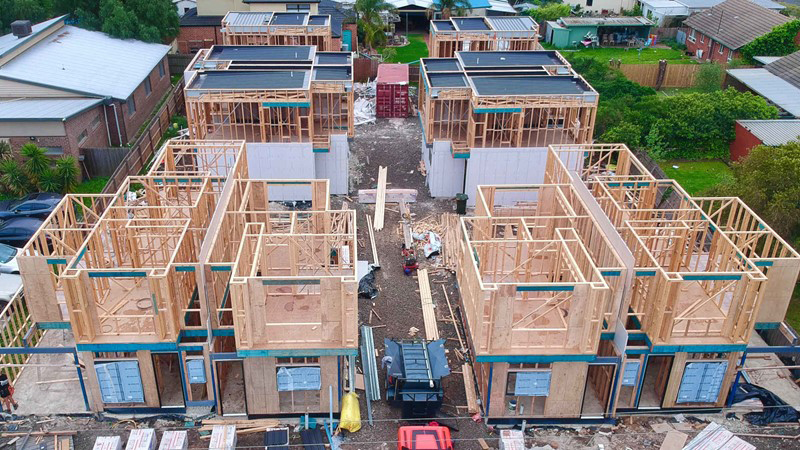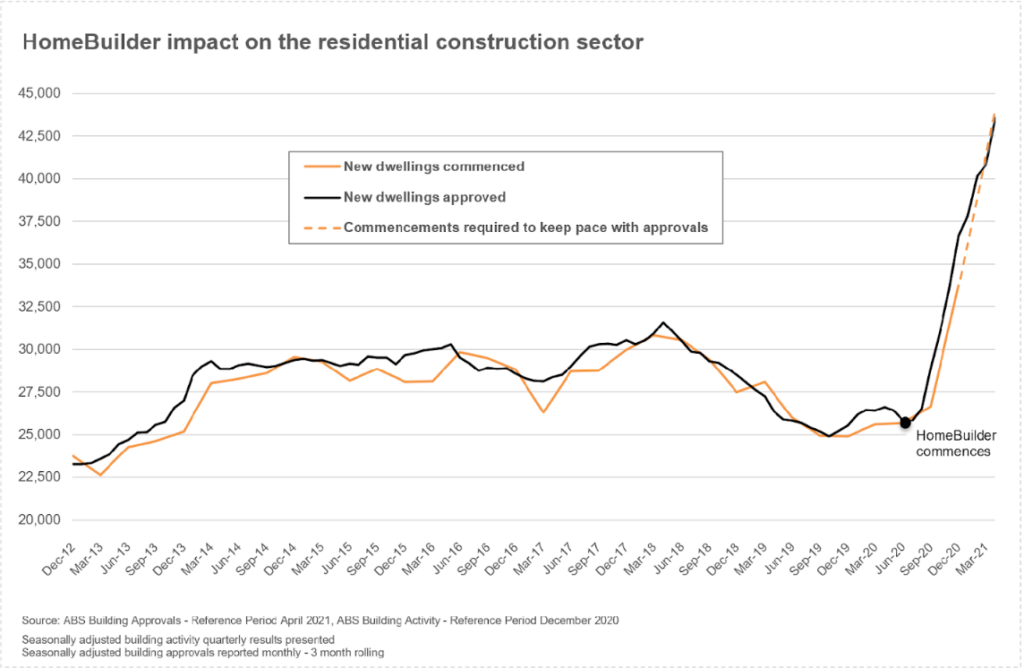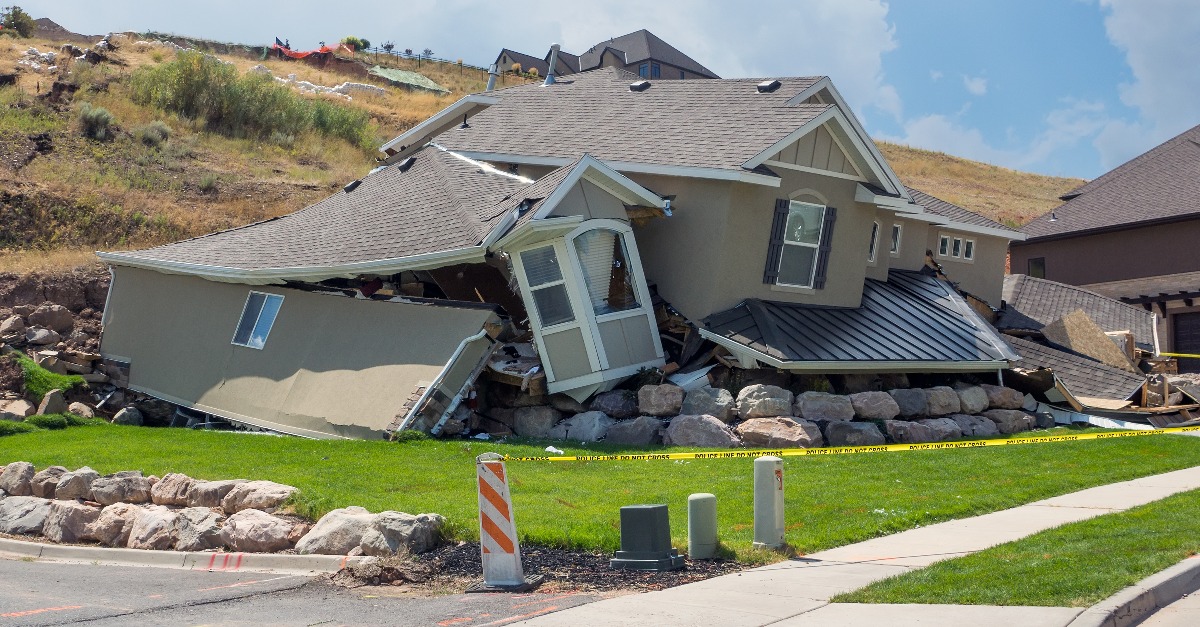With Australians signing up for the Federal Government HomeBuilder program in droves, approvals for new dwellings and the subsequent lending to building them have skyrocketed – creating a residential construction boom. However, cracks are beginning to emerge on the back of timber shortages and the rising cost of building materials.
The HomeBuilder program did what it was designed to do
In June 2020, during the height of the Covid-19 pandemic, the Federal Government introduced the HomeBuilder program. It was designed to stimulate the residential construction sector and create jobs as the country recovered from the pandemic.
The government offered a $25,000 grant for any new residential build or substantial renovation – providing construction commenced within three months, and the home value was less than $750,000. Given the time constraint, new dwelling approvals immediately skyrocketed.
The program was extended in November 2020 but with a reduced grant of $15,000. However, the value of eligible homes increased to $950,000 in NSW, $850,000 in Vic and remained at $750,000 for all other states. To offset the spike in demand, the government gave builders six months to commence construction.
HomeBuilder has undoubtedly been successful in stimulating the residential construction sector. Never ones to knock back a free lunch, Australians have signed up in their droves. The most recent figures from the Australian Bureau of Statistics (ABS) showed:
- New dwelling approvals increased by 64%
There were 43,596 approvals between February 2021 to April 2021 – 64% higher than the same time last year and 52% above the long term average. - Loans for new dwellings increased by 93%
In April 2021, mortgage lenders offered $3.21 billion in loan commitments to construct a new dwelling, which was below the peak of $4.25 billion in February 2021, but still 93% higher than the same time last year.
Over the long term, we can see that the number of new dwellings commenced has followed a similar trend to new dwellings approved. And since the announcement of HomeBuilder, it appears as though this trend is continuing. The most up to date figures from the ABS showed 33,761 commencements in the three months to December 2020, which was 35% higher than the same time last year and 22% above the long term average.
So the question needs to be asked, will the number of new dwellings commenced in 2021 keep pace with what has been a dramatic spike in new dwelling approvals?
Given ABS data for new dwellings commenced is only available until December 2020, it’s too early to answer that question. However, what is apparent is the need for a significant and sustained increase in the number of new dwellings commenced during 2021 if the long term trend is to continue.
Material shortages could bring it all undone…
At WBP Group, we’re beginning to see anecdotal evidence that suggests significant cracks are forming in the construction sector.
Material shortages are now commonplace – for timber in particular. The cost of timber has risen, and lead times for deliveries have blown out as suppliers struggle to keep up with demand. But it’s not just timber. Most of the essential building materials used to construct a new dwelling are experiencing similar issues.
ABC News reported in May 2021 that one builder in Tasmania who usually only had to wait a week for structural timber was now having to wait three months. Another builder said he was waiting up to 10 weeks longer for laminated timber beams, trench mesh and steel.
The cause of these material shortages appears to be the result of a confluence of events:
- Local timber shortages
The Black Summer bush fires saw the loss of tens of thousands of hectares of softwood plantation intended for the construction industry. - Stiff international competition for imported materials
Like Australia, countries worldwide are attempting to stimulate their own construction industries, creating a highly competitive market.
Speaking to ABC News in April, Cameron MacDonald, executive general manager of OneFortyOne, the largest integrated forestry company in South Australia, had this to say –
“We’re seeing a worldwide phenomenon where government stimulus has seen a lot of new home building activity, as well as do-it-yourself projects, and the timber prices in the US have doubled.”
There is real cause for concern
- If there are no materials to work with, there’s no work
When you have no materials to build with, then you can’t work. And as we saw during the Covid-19 pandemic, when people can’t work, they lose their income. - Increased costs eat into builders profit margins
Fixed-price building contracts also pose a significant risk to the sector. This type of contract provides security as builders cannot pass on any price increases by law. However, if prices continue to increase after the builder signs the contract, this eats into their profit margin. If the cost of materials rises too much, builders may end up losing money on a new build. Larger companies can typically absorb some increases, but eventually, all builders will start to feel this pain. There is a growing concern from within the building industry that this boom may actually send a number of builders broke. - Homeowners feel the pain too
If builders can’t deliver on time and on budget, the customer will be impacted one way or another. Some may be forced to make additional rental payments while waiting for their new home to be completed. And as material shortages start to bite, builders will inevitably begin to pass on these price increases.
Can house prices keep up with increasing construction costs?
The Australian housing market has experienced significant growth since the height of the pandemic. But the big question is – can house values continue to rise to accommodate the increase in build costs? Or will homeowners be faced with the prospect of owning a home that they have over-capitalised?
The next round of ABS statistics (due in July 2021) will reveal what’s happened in the first quarter of 2021. While we expect the rate of new dwellings commencement to have increased, it will be interesting to see if it has kept pace with approvals.
The Morrison government announced the closure of the HomeBuilder program on the 14th April 2021. And to ease pressure on the sector, the date required to commence construction was extended from six months to 18 months.
But right now, the question remains – Is the construction boom just getting started, or is the residential housing sector going to buckle under the strain?










